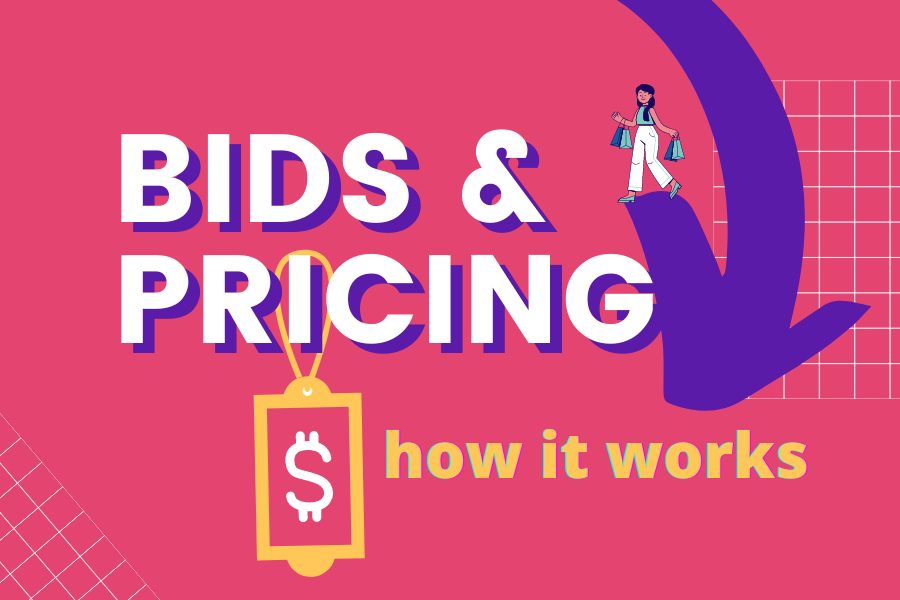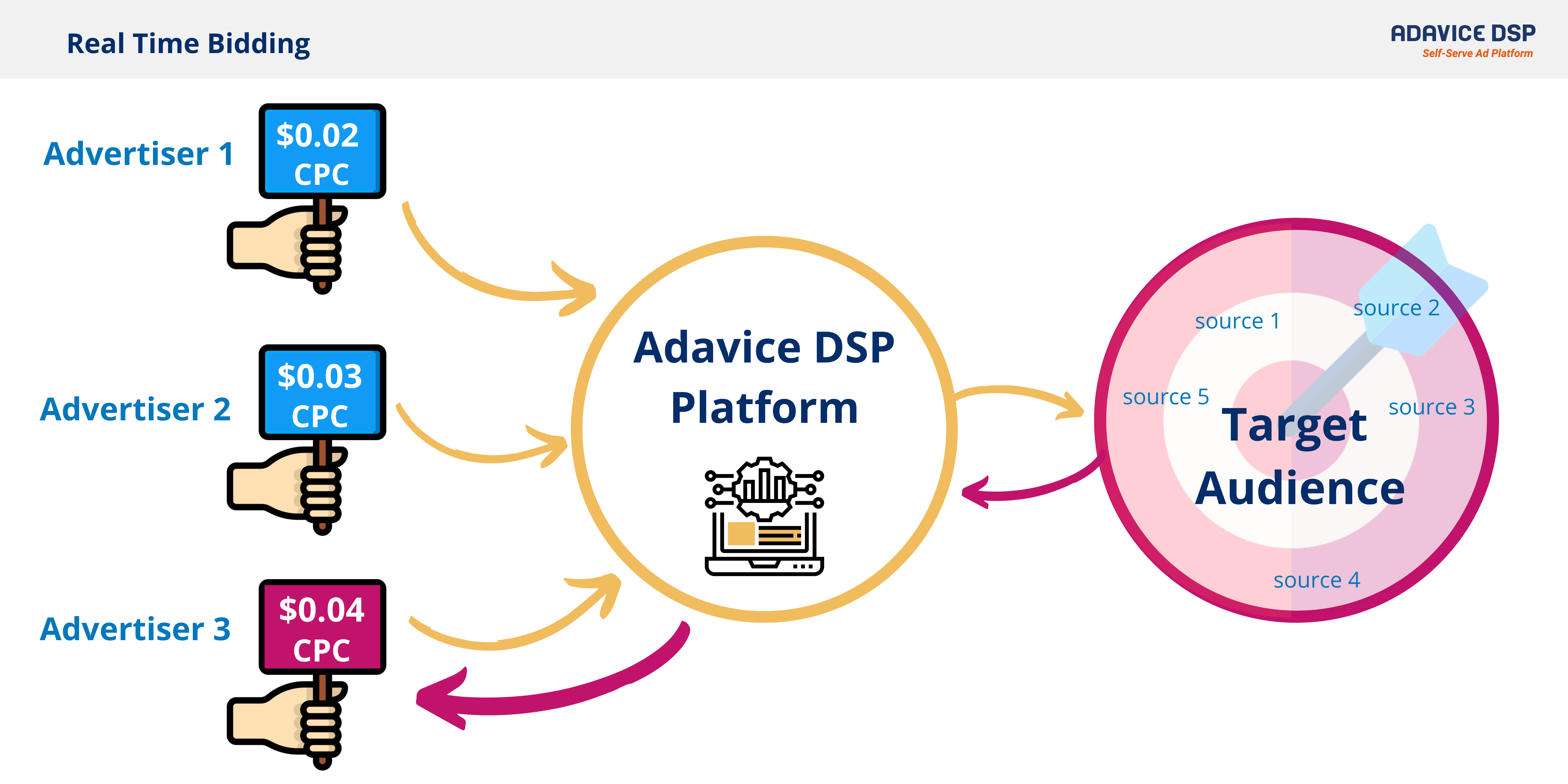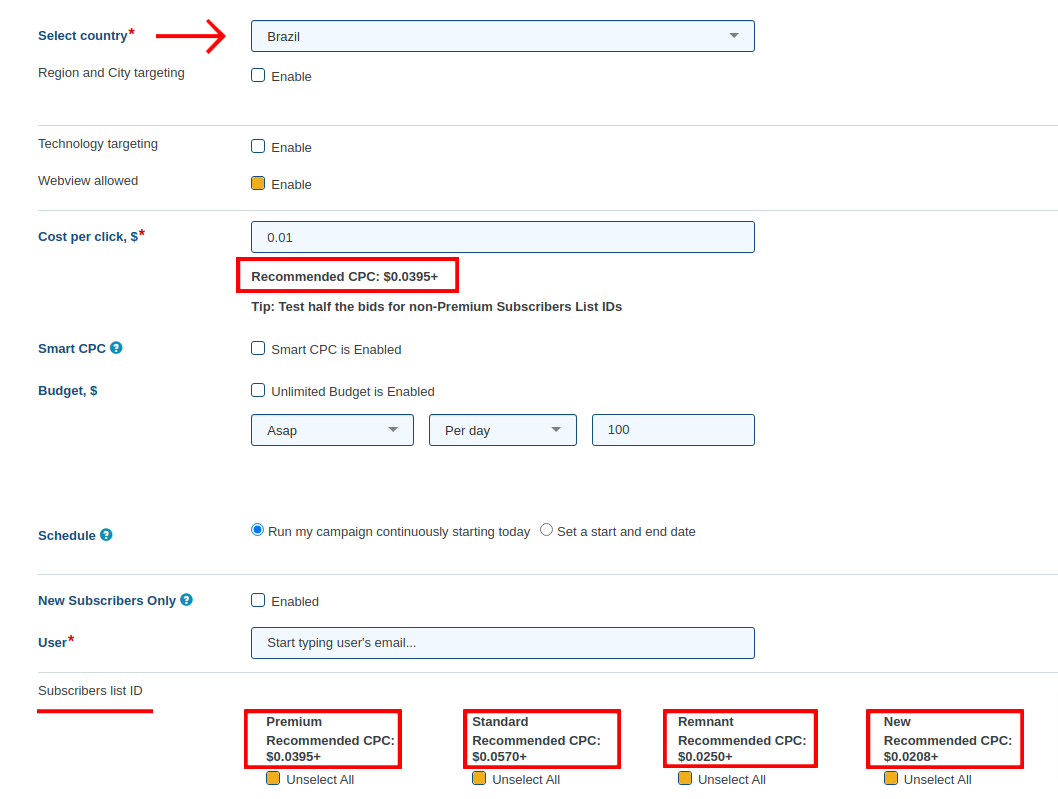

Understand how bids work, what are the minimum rates you can set, and how you can get traffic from more expensive sources fitting your target pricing.
Adavice DSP gives you the opportunity to buy traffic at a traffic auction using real time bidding (RTB) principle. We are connected to various traffic sources, which gives us the opportunity to let you choose a comfortable rate for your campaigns.
When you set up the campaign and place the rate (bid) our system starts to analyze all available traffic taking into account your targeting criterias and finds relevant audiences. Same happens for all other active campaigns on Adavice DSP. Then your bid goes to an open auction and competes with other advertisers for the same traffic unit users with certain targeting settings. The results are very simple - higher bid gets the priority of traffic.
Check out this example:

Auction system gives you a benefit of flexible rates. There is a simple principle working - the more traffic in the system fits your criteria - the cheaper rate you can get. That is why narrow targeting (ex: specific OS, carrier) will be more expensive.
Common reasons of traffic growing in the price:
So how can you know what is the optimal rate to set on your campaign?
We strongly advise to use the recommended rate in campaign settings (make sure you
selected
Country, and don’t forget to check recommended rates per source /subscriber list):

This rate is calculated based on the demand in our system. You are still free to set a smaller or bigger rate, depending on your traffic goals and desired volumes.
Pricing models:
CPC - push notifications, inpage push, calendar notification.
CPM - pop unders, native ads, display ads.
Minimum bids on the platform:
Important to remember- these minimum rates apply to “Standard” & “Remnant” traffic sources.
Premium sources have higher rates and you won’t be able to target them using minimum bids. Although they are more pricey, premium sources usually have higher conversion rate, so we recommend testing them.
There’s another useful feature you can use - enable Smart CPC / CPM.

This option allows you to get traffic from more expensive sources and still fit into the rate you set up.
Let’s compare how it works in the example.
Option 1.
You set the bid of $0.05 CPC and did not use the smart rate option.
This means
you
will be
buying traffic exactly at $0.05 CPC. Traffic sources with higher competition and pricing
won’t get to your campaign.
Option 2.
You set the bid of $0.05 CPC and enabled the smart CPC option.
Adavice DSP will give you traffic from more expensive sources, and it will analyze the
competition and find cheaper traffic than $0.05 CPC to provide you with. But the algorithm
will balance on these sources so your average CPC would be $0.05.
To sum up - Smart CPC/ CPM allows you to get a wider amount of good sources for your campaigns and still fit into desired rates.
Understanding of the processes described above will help you to run your campaigns smart. Use recommended rates, pay attention to your targeting, test different traffic sources with relevant rates and use smart CPM /CPC options to get more traffic!
Rate this article